Eddie's Wood samples.
Here are some samples of timber I've cut with my Chainsaw Mill
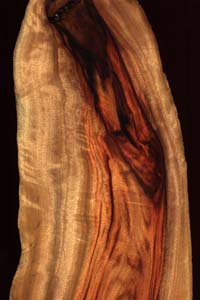
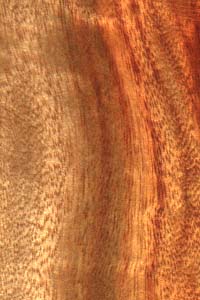 The
image on the right is a 150 dpi scan of a portion near the centre
of the image on the left. The wood is from a camphor laurel branch
we had to cut in order to get the Nimbin rocks community house
onto the property (it was move from queensland). The timber was
left laying in the paddock for around 6 months - until I grabbed
it last week.
The
image on the right is a 150 dpi scan of a portion near the centre
of the image on the left. The wood is from a camphor laurel branch
we had to cut in order to get the Nimbin rocks community house
onto the property (it was move from queensland). The timber was
left laying in the paddock for around 6 months - until I grabbed
it last week.
 This
is my first Camphor creation - you have to start somewhere
This
is my first Camphor creation - you have to start somewhere
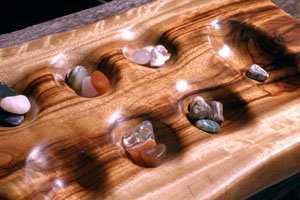
This
is a mancala board
I made out of camphor..
Red Gum Eucalyptus Stuffedifinoami?

This is a piece of dead branch from a tree at Nimbin. Numerous defects in the wood make it a good candidate for oxidation in my stove, but this was just a narrow piece - the thicker part of the branch may be in better condition.
Acacia (baileyana???)

This was a dead tree at my Ipswich residence. A fast grown short lived tree I planted some ten years ago. It grew to full size in maybe 6 years and died of old age six months ago. The trunk was straight and perhaps 180mm thick at the base. It's too small to be of any interest to a conventional saw mill but is an attractive wood a hobbyist could mill for things like window trimming or for wood turning (small bowls and such). The sapling was sold as a Cootamundra Wattle but I doubt that the label was correct. Wattle trees are fairly soft and prone to wood boring insects. This tree already had a 5mm termite hole up the centre but only for 400mm or so from ground level.
Black-bean
was
Castanospermum
(I think it's been renamed.)
Black bean is a local native tree, mature trees have large patches of dark wood in them but this young tree had very little. This tree was spilt in two by a falling river-oak (below) this branch was dead but still fresh. I oven dried this sample to speed things up. One negative of this tree is the beans are sometimes eaten by cattle and the cattle can die as a result.
Later.. As the wood aged a black pattern formed all over it.
River-oak (aka
She-oak or River she-oak)
probably Casuarina cunninghamiana

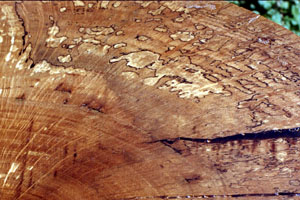 Another
native tree. This was from a large tree which fell across the
creek when the bank is was growing in was eroded away - this is a
common occurrence. I had hoped to salvage the timber when my mill
was extended to handle the longer lengths but borers, ants and
decay seem to be beating me. This sample was from the top of the
tree which had fallen across the creek and onto the opposite bank.
It had been laying some 9 months on the moist soil and was
saturated when I cut it. It was full on black ants and showing
signs of cracking and decay. Oven drying it expanded the cracks.
Another
native tree. This was from a large tree which fell across the
creek when the bank is was growing in was eroded away - this is a
common occurrence. I had hoped to salvage the timber when my mill
was extended to handle the longer lengths but borers, ants and
decay seem to be beating me. This sample was from the top of the
tree which had fallen across the creek and onto the opposite bank.
It had been laying some 9 months on the moist soil and was
saturated when I cut it. It was full on black ants and showing
signs of cracking and decay. Oven drying it expanded the cracks.
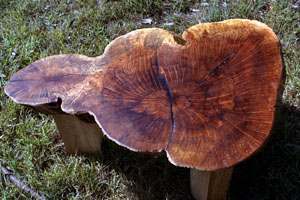
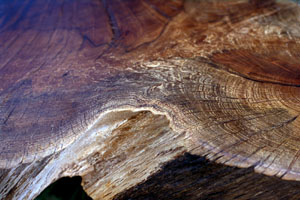 In
early 1999 I salvaged a large log which is described in
mill-2.htm. The wood changes
dramatically as it ages and starts to decay. It cracks like crazy
especially when cross cut and is generally labor intensive. This
is what the my end product looks like. Note the large filled crack
- one almost splitting the table in two.
In
early 1999 I salvaged a large log which is described in
mill-2.htm. The wood changes
dramatically as it ages and starts to decay. It cracks like crazy
especially when cross cut and is generally labor intensive. This
is what the my end product looks like. Note the large filled crack
- one almost splitting the table in two.
T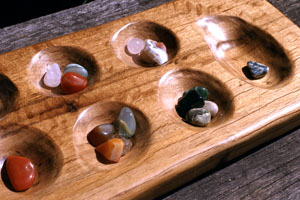 his
is a mancala board
I made out of Casuarina.
his
is a mancala board
I made out of Casuarina.
African thorn tree

This is a noxious pest which rivals
the camphor laurel in it's invasiveness of the creek gullies. When
I cut my first one this week I was pleasantly surprised by the
exposed timber. When freshly cut the the massive heart wood is a
beetroot colour with and interesting pattern in it. As the wood
dries it fades to a sort of bronzy color. The bands which are
visible in this image appear to be growth rings. They are roughly
10mm apart showing to fast growing nature of this tree. The thorns
are around 80mm long and needle sharp. This make it a dangerous
tree to handle. The trees are bare of leaves during winter making
it hard to tell live trees from dead ones. Despite efforts to
poison some trees - I haven't seen any dead ones yet. 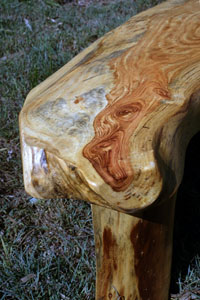
This
slab was taken from a poisoned tree. The tree was felled and left
for around 6 months. The poisoned bits were decaying and full of
boring insects. While the bark is normally almost impossible to
remove - after the insects have been chewing it for six months it
tends to fall off. The holes and gray patches ended up looking
quite good but next time (if there is one) I'll slab them green
and dry them under cover.